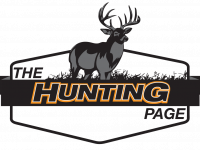As with any sport, myths abound in turkey hunting. Hunt camp is a prime locale to pass around stories of wild turkeys larger than a Volkswagen, turkeys that earned epic nicknames for their ability to evade hunters for decades… the list goes on. If you’ve ever hunted gobblers in the fall (or plan to at some point), you’ve likely heard some whoppers about chasing toms. Here, Steve Hickoff outlines seven fall turkey hunting myths you can try to debunk this season.
Myth: Fall gobblers don’t strut or gobble. Fall turkeys roost gobble, ground gobble and after an intentional flock break as they regroup during your call-back effort. This includes longbeards, super jakes, and young male turkeys.
Fall gobblers strut too. Super jakes — male fall turkeys born two springs ago, but not yet two years of age — seem particularly committed to strutting in autumn. Each fall I’ll usually find a gang including several strutting full-fan gobblers, and a nearby group of adult hens with a family flock.
And it’s not just the male birds. During one autumn Vermont hunt, my buddies and I called in a strutting adult hen. Doubt it? We filmed it.”
Photos: California Department of Fish and Game (top); Ohio Department of Natural Resources (above)


